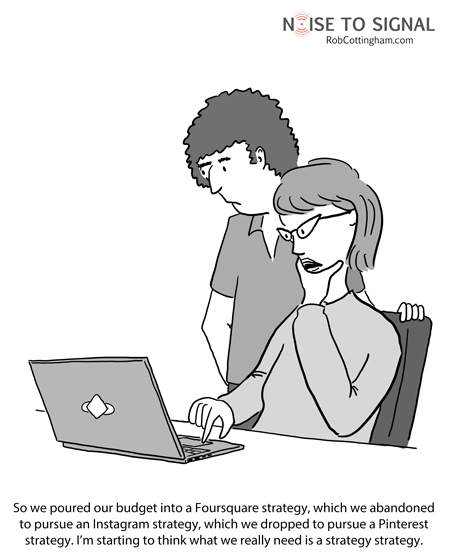It's been a great week everyone, but now it's time for week three of our class! Congratulate yourselves, we put a lot on you. As you learn about social media, take a short break and enjoy the above comic from Calvin & Hobbes. While it's a bit snarky, it's also true about social media: you get what you put into it.
Our theme this week is blogging and micro blogging. Names that may be familiar to you are platforms like Wordpress, Blogger (which is what the course blog uses,) and Tumblr, as well as leading micro blogging service Twitter.
This week we will ask you all to roll up your sleeves and get a bit more into doing things. That starts here, on the blog, with assignment one:
1. Register to join the blog as an author.
Step one, use the Moodle course mail system to send your e-mail to myself and Joanne. Please do this ASAP, no later than Tuesday, April 17 at midnight Pacific Time.
Step two, you will receive an invitation to join the blog at that email address by no later than Wednesday morning.
Step three, follow the instructions that Blogger emails to you.
2. As with last week, find a story, blog post, video, podcast, or any other digital media that relates to this week's topic, in this case blogging and micro blogging. If it relates to a subject being discussed by your classmates on Moodle, or if it relates to your class project, all the better. The only real requirement though is that the subject is related to blogging or micro blogging and that you think it is worth sharing with the class.
3. Complete the course browsings for this week:
Read this:
What is a blog?
Read this:
Twitter, "Truthiness" and breaking news
Watch this:
Twitter founder gives talk about what Twitter is, how it was originally intended, and how it has changed.
Read this:
Some practical advice about using Twitter.
4. Go to Blogger and click on the little orange pencil button next to the course blog title. Put a headline in at the top, and then in the body section, write a short post about the link you found for item two in the assignment list here. Describe in 1-3 paragraphs what the story is, why you want to share it, and what your thoughts or reactions to the link are. Do this by the end of the week on Sunday night; we will talk about the experience next week.
5. Go to Moodle and complete your answers to the three discussion questions there. Because we are asking you to join the blog this week, we will keep the discussion questions a bit light this time,
but don't forget to reply to at least two other students' posts on Moodle!
6. Look at the earlier post here on the blog that describes the assignment for the midterm/final project. Then contact your instructors via the Moodle Course Mail before the end of Friday, April 20th to tell us:
a.) Are you contracting for an A grade, a B grade, or a C grade.
To repeat what the syllabus says, if you are contracting for an A, you must participate in the midterm/final project and write a 5-6 page reflection for the final. If you are contracting for a B, you must participate in the midterm/final, but no 5-6 page paper will be required at the end of class. Those contracting for a C are not required to participate in the midterm/final, but must still participate in the Moodle discussions for those assignments by interacting with their fellow students.
b.) If you are contracting for an A or B grade, tell us what your project will be.
If this is not fully formed yet, contact us ASAP and we will work with you to finalize the form. Do not start the project until you have an approval from one of your instructors.
I will be back in Portland tonight, Monday the 16th if anyone has technical problems!
Happy week three!



